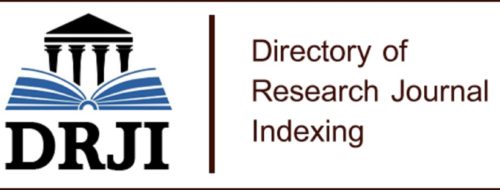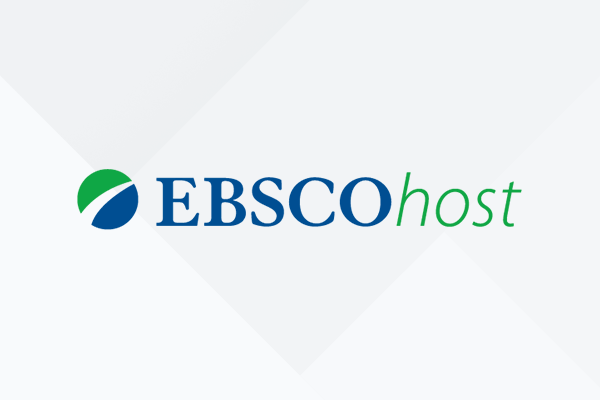Öz
Ürün ve hizmetler hakkında çevrimiçi (online) yorum okuyanların, bu yorumların doğruluğu ve tarafsızlığına dair şüpheleri her geçen gün artmaktadır. Bu sebeple, tüketicilerin bu yorumlara inanmasını ve faydalı bulmasını sağlamak amacıyla firmalar, çevrimiçi yorum yazanlardan yorumun gerçekçi olduğuna dair ipuçları sunmalarını istemektedir. Bu ipuçlarından biri olan ürün kullanım süresinin çevrimiçi yorumda belirtilmesi mevcut araştırmada ele alınmıştır. Bu kapsamda, çevrimiçi yorumda ürün kullanım süresinin yer almasının, okuyucunun yorumdan algıladığı fayda üzerindeki etkileri, bu etkinin olumlu ve olumsuz yorumlar için nasıl farklılaştığı ve yorumun inandırıcılığının bu etkideki aracılık rolü incelenmiştir. Bu amaçla, üç ön-araştırma ile çevrimiçi yorumun manipülasyonu sağlanmış; sonrasında ise dört farklı senaryonun yer aldığı denekler arası faktöriyel tasarım modeli uygulanmıştır. Yapılan analizler sonucunda ürün kullanım süresinin çevrimiçi yorumda yer almasının yorumdan algılanan faydayı önemli ölçüde arttırdığı görülmüştür. Olumsuz çevrimiçi yorumlarda ürün kullanım süresinin belirtilmesi algılanan faydayı olumlu yorumlarda belirtilmesine göre daha az etkilemektedir. Ayrıca, ürün kullanım süresinin çevrimiçi yorumda belirtilmesi algılanan faydayı yorumun inandırıcılığı aracılıyla etkilemektedir.
Anahtar Kelimeler
Çevrimiçi Yorum Fayda İnandırıcılık Aracılık Analizi Ürün Kullanım Süresi
Destekleyen Kurum
Bu çalışma, 2017 yılında Raife Meltem YETKİN ÖZBÜK tarafından yazılan "Online Yorumda Ürün Kullanım Süresinin Algılanan Fayda Üzerindeki Etkileri" başlıklı doktora tezinden türetilmiştir.
Kaynakça
- Agnihotri, A. ve Bhattacharya, S. (2016). Online review helpfulness: Role of qualitative factors. Psychology and Marketing. https://doi.org/10.1002/mar.20934
- Ansari, A., Essegaier, S. ve Kohli, R. (2000). Internet Recommendation Systems. Journal of Marketing Research, 37(3), 363–375. https://doi.org/10.1509/jmkr.37.3.363.18779
- Baron, R. M. ve Kenny, D. A. (1986). The moderator–mediator variable distinction in social psychological research: Conceptual, strategic, and statistical considerations. Journal of Personality and Social Psychology, 51(6), 1173-1182.
- Benedicktus, R. L., Brady, M. K., Darke, P. R. ve Voorhees, C. M. (2010). Conveying trustworthiness to online consumers: reactions to consensus, physical store presence, brand familiarity, and generalized suspicion. Journal of Retailing, 86(4), 322–335. https://doi.org/10.1016/j.jretai.2010.04.002
- Bowerman, B. L., O'Connell, R. T. ve Hand, L. M. (2001). Business Statistics in Practice . McGraw-Hill.
- Casaló, L. V., Flavián, C., Guinalíu, M. ve Ekinci, Y. (2015). Avoiding the dark side of positive online consumer reviews: Enhancing reviews’ usefulness for high risk-averse travelers. Journal of Business Research, 68(9), 1829–1835. https://doi.org/10.1016/j.jbusres.2015.01.010
- Chen, J., Teng, L., Yu, Y. ve Yu, X. (2016). The effect of online information sources on purchase intentions between consumers with high and low susceptibility to informational influence. Journal of Business Research, 69(2), 467–475. https://doi.org/10.1016/j.jbusres.2015.05.003
- Chen, Z. ve Lurie, N. H. (2013). Temporal Contiguity and Negativity Bias in the Impact of Online Word of Mouth. Journal of Marketing Research, 50(4), 463–476. https://doi.org/10.1509/0022-2437-50.4.463
- Cheng, Y. H. ve Ho, H. Y. (2015). Social influence’s impact on reader perceptions of online reviews. Journal of Business Research, 68(4), 883–887. https://doi.org/10.1016/j.jbusres.2014.11.046
- Felbermayr, A. ve Nanopoulos, A. (2016). The Role of Emotions for the Perceived Usefulness in Online Customer Reviews. Journal of Interactive Marketing. https://doi.org/10.1016/j.intmar.2016.05.004
- Filieri, R. (2015). What makes online reviews helpful? A diagnosticity-adoption framework to explain informational and normative influences in e-WOM. Journal of Business Research, 68(6), 1261–1270. https://doi.org/10.1016/j.jbusres.2014.11.006
- Gershoff, A. D., Mukherjee, A. ve Mukhopadhyay, A. (2004). Consumer Acceptance of Online Agent Advice: Extremity and Positivity Effects. Journal of Consumer Psychology, 13(1–2), 161–170. https://doi.org/10.1207/s15327663jcp13-1&2_14
- Hair, J. F., Black, W. C., Babin, B. J. ve Anderson, R. E. (2010). Multivariate data analysis: A global perspective. Pearson Education.
- Hamby, A., Daniloski, K. ve Brinberg, D. (2015). How consumer reviews persuade through narratives. Journal of Business Research, 68(6), 1242–1250. https://doi.org/10.1016/j.jbusres.2014.11.004
- Hamilton, R. W. ve Thompson, D. V. (2007). Is There a Substitute for Direct Experience? Comparing Consumers’ Preferences after Direct and Indirect Product Experiences. Journal of Consumer Research. https://doi.org/10.1086/520073
- Hayes, A. (2013). Model Templates for PROCESS for SPSS and SAS. Nisan 13, 2017 tarihinde http://www.personal.psu.edu/jxb14/M554/specreg/templates.pdf adresinden alındı
- Hoch, S. J. (2002). Product Experience Is Seductive. Journal of Consumer Research. https://doi.org/10.1086/344422
- Ito, T. A., Larsen, J. T., Smith, N. K. ve Cacioppo, J. T. (1998). Negative information weighs more heavily on the brain: The negativity bias in evaluative categorizations. Journal of Personality and Social Psychology. https://doi.org/10.1037//0022-3514.75.4.887
- Jiménez, F. R. ve Mendoza, N. A. (2013). Too popular to ignore: The influence of online reviews on purchase intentions of search and experience products. Journal of Interactive Marketing, 27(3), 226–235. https://doi.org/10.1016/j.intmar.2013.04.004
- Koo, D. (2015). The strength of no tie relationship in an online recommendation: Focused on interactional effects of valence, tie strength, and type of service. European Journal of Marketing, 49(7/8), 1163–1183. https://doi.org/10.1179/str.2006.53.4.005
- Lee, M., Rodgers, S. ve Kim, M. (2009). Effects of valence and extremity of eWOM on attitude toward the brand and website. Journal of Current Issues and Research in Advertising, 31(2), 1–11. https://doi.org/10.1080/10641734.2009.10505262
- Li, H., Daugherty, T. ve Biocca, F. (2001). Characteristics of virtual experience in electronic commerce: A protocol analysis. Journal of Interactive Marketing. https://doi.org/10.1002/dir.1013
- Li, L., Lee, K. Y., Lee, M. ve Yang, S.-B. (2020). Unveiling the cloak of deviance: Linguistic cues for psychological processes in fake online reviews. International Journal of Hospitality Management, 87(February), 102468. https://doi.org/10.1016/j.ijhm.2020.102468
- MacKinnon, D. P. (2008). Introduction to Statistical Mediation Analysis. Routledge.
- Mafael, A., Gottschalk, S. A. ve Kreis, H. (2016). Examining Biased Assimilation of Brand-related Online Reviews. Journal of Interactive Marketing. https://doi.org/10.1016/j.intmar.2016.06.002
- Malhotra, N. K. (2007). Marketing Research: An Applied Orientation, 5th Edition. Prentice-Hall, Inc, New Jersey, USA.
- Mert, M. (2016). Yatay Kesit Veri Analizi Bilgisayar Uygulamaları. Ankara: Detay Yayıncılık.
- Moore, S. G. (2015). Attitude predictability and helpfulness in online reviews: The role of explained actions and reactions. Journal of Consumer Research, 42(1), 30–44. https://doi.org/10.1093/jcr/ucv003
- Munzel, A. (2016). Assisting consumers in detecting fake reviews: The role of identity information disclosure and consensus. Journal of Retailing and Consumer Services, 32, 96–108. https://doi.org/10.1016/j.jretconser.2016.06.002
- Nunnally, J. (1978), Psychometric Methods, New York: McGraw-Hill.
- Ozer, M. (2011). The moderating roles of prior experience and behavioral importance in the predictive validity of new product concept testing. Journal of Product Innovation Management. https://doi.org/10.1111/j.1540-5885.2010.00784.x
- Pan, Y. ve Zhang, J. Q. (2011). Born Unequal: A Study of the Helpfulness of User-Generated Product Reviews. Journal of Retailing, 87(4), 598–612. https://doi.org/10.1016/j.jretai.2011.05.002
- Park, C. ve Lee, T. M. (2009a). Antecedents of Online Reviews’ Usage and Purchase Influence: An Empirical Comparison of U.S. and Korean Consumers. Journal of Interactive Marketing, 23(4), 332–340. https://doi.org/10.1016/j.intmar.2009.07.001
- Park, C. ve Lee, T. M. (2009b). Information direction, website reputation and eWOM effect: A moderating role of product type. Journal of Business Research, 62(1), 61–67. https://doi.org/10.1016/j.jbusres.2007.11.017
- Peng, L., Cui, G., Zhuang, M. ve Li, C. (2016). Consumer perceptions of online review deceptions: an empirical study in China. Journal of Consumer Marketing. https://doi.org/10.1108/JCM-01-2015-1281
- Purnawirawan, N., De Pelsmacker, P. ve Dens, N. (2012). Balance and Sequence in Online Reviews: How Perceived Usefulness Affects Attitudes and Intentions. Journal of Interactive Marketing, 26(4), 244–255. https://doi.org/10.1016/j.intmar.2012.04.002
- Purnawirawan, N., Eisend, M., Pelsmacker, P. De ve Dens, N. (2015). A Meta-analytic Investigation of the Role of Valence in Online Reviews. Journal of Interactive Marketing, 31, 17–27. https://doi.org/10.1016/j.intmar.2015.05.001
- Reimer, T. ve Benkenstein, M. (2016). Altruistic eWOM marketing: More than an alternative to monetary incentives. Journal of Retailing and Consumer Services. https://doi.org/10.1016/j.jretconser.2016.04.003
- Rozin, P. ve Royzman, E. B. (2001). Negativity bias, negativity dominance, and contagion. Personality and Social Psychology Review. https://doi.org/10.1207/S15327957PSPR0504_2
- Schlosser, A. E. (2011). Can including pros and cons increase the helpfulness and persuasiveness of online reviews? The interactive effects of ratings and arguments. Journal of Consumer Psychology, 21(3), 226–239. https://doi.org/10.1016/j.jcps.2011.04.002
- Singh, J. P., Irani, S., Rana, N. P., Dwivedi, Y. K., Saumya, S. ve Kumar Roy, P. (2017). Predicting the “helpfulness” of online consumer reviews. Journal of Business Research, 70, 346–355. https://doi.org/10.1016/j.jbusres.2016.08.008
- Sussman, S. W. ve Siegal, W. S. (2003). Informational influence in organizations: An integrated approach to knowledge adoption. Information Systems Research. https://doi.org/10.1287/isre.14.1.47.14767
- Tabachnick, B. ve Fidell, L. (2013). Using Multivariate Statistics (International b.). New Jersey: Pearson.
- Wu, P. F. (2013). In search of negativity bias: An empirical study of perceived helpfulness of online reviews. Psychology and Marketing. https://doi.org/10.1002/mar.20660
- Wu, Y., Ngai, E. W. T., Wu, P. ve Wu, C. (2020). Fake online reviews : Literature review , synthesis , and directions for future research. Decision Support Systems, (February), 113280. https://doi.org/10.1016/j.dss.2020.113280
- Zhang, L., Gao, Y. ve Zheng, X. (2020). Let’s Talk About This in Public: Consumer Expectations for Online Review Response. Cornell Hospitality Quarterly. https://doi.org/10.1177/1938965519864864
Öz
Consumers are increasingly suspicious of the accuracy and objectivity of online reviews of products and services. Therefore, to make the consumers to believe in the online reviews and to perceive online reviews useful, firms suggest their consumers provide clues while writing online reviews. One of these clues, stating the presence of product usage period in online reviews, is addressed in the current research. Thus, the effect of stating the product usage period on the perceived usefulness of online reviews; how this effect differs for positive and negative ones, and the mediating role of the review credibility in this relationship were examined. For this purpose, the online review was manipulated with three pre-studies; afterwards, a between-subjects factorial experimental design model was developed with four different scenarios. As a result of the analysis, it was observed that stating the product usage period in online review significantly increases the perceived usefulness. Stating the product usage period in negative online reviews is less effective on the perceived usefulness of online reviews than in positive online reviews. In addition, the presence of product usage period in online review affects perceived usefulness by affecting the credibility of online review.
Anahtar Kelimeler
Online Review Helpfulness Credibility Mediation Analysis Product Usage Period
Kaynakça
- Agnihotri, A. ve Bhattacharya, S. (2016). Online review helpfulness: Role of qualitative factors. Psychology and Marketing. https://doi.org/10.1002/mar.20934
- Ansari, A., Essegaier, S. ve Kohli, R. (2000). Internet Recommendation Systems. Journal of Marketing Research, 37(3), 363–375. https://doi.org/10.1509/jmkr.37.3.363.18779
- Baron, R. M. ve Kenny, D. A. (1986). The moderator–mediator variable distinction in social psychological research: Conceptual, strategic, and statistical considerations. Journal of Personality and Social Psychology, 51(6), 1173-1182.
- Benedicktus, R. L., Brady, M. K., Darke, P. R. ve Voorhees, C. M. (2010). Conveying trustworthiness to online consumers: reactions to consensus, physical store presence, brand familiarity, and generalized suspicion. Journal of Retailing, 86(4), 322–335. https://doi.org/10.1016/j.jretai.2010.04.002
- Bowerman, B. L., O'Connell, R. T. ve Hand, L. M. (2001). Business Statistics in Practice . McGraw-Hill.
- Casaló, L. V., Flavián, C., Guinalíu, M. ve Ekinci, Y. (2015). Avoiding the dark side of positive online consumer reviews: Enhancing reviews’ usefulness for high risk-averse travelers. Journal of Business Research, 68(9), 1829–1835. https://doi.org/10.1016/j.jbusres.2015.01.010
- Chen, J., Teng, L., Yu, Y. ve Yu, X. (2016). The effect of online information sources on purchase intentions between consumers with high and low susceptibility to informational influence. Journal of Business Research, 69(2), 467–475. https://doi.org/10.1016/j.jbusres.2015.05.003
- Chen, Z. ve Lurie, N. H. (2013). Temporal Contiguity and Negativity Bias in the Impact of Online Word of Mouth. Journal of Marketing Research, 50(4), 463–476. https://doi.org/10.1509/0022-2437-50.4.463
- Cheng, Y. H. ve Ho, H. Y. (2015). Social influence’s impact on reader perceptions of online reviews. Journal of Business Research, 68(4), 883–887. https://doi.org/10.1016/j.jbusres.2014.11.046
- Felbermayr, A. ve Nanopoulos, A. (2016). The Role of Emotions for the Perceived Usefulness in Online Customer Reviews. Journal of Interactive Marketing. https://doi.org/10.1016/j.intmar.2016.05.004
- Filieri, R. (2015). What makes online reviews helpful? A diagnosticity-adoption framework to explain informational and normative influences in e-WOM. Journal of Business Research, 68(6), 1261–1270. https://doi.org/10.1016/j.jbusres.2014.11.006
- Gershoff, A. D., Mukherjee, A. ve Mukhopadhyay, A. (2004). Consumer Acceptance of Online Agent Advice: Extremity and Positivity Effects. Journal of Consumer Psychology, 13(1–2), 161–170. https://doi.org/10.1207/s15327663jcp13-1&2_14
- Hair, J. F., Black, W. C., Babin, B. J. ve Anderson, R. E. (2010). Multivariate data analysis: A global perspective. Pearson Education.
- Hamby, A., Daniloski, K. ve Brinberg, D. (2015). How consumer reviews persuade through narratives. Journal of Business Research, 68(6), 1242–1250. https://doi.org/10.1016/j.jbusres.2014.11.004
- Hamilton, R. W. ve Thompson, D. V. (2007). Is There a Substitute for Direct Experience? Comparing Consumers’ Preferences after Direct and Indirect Product Experiences. Journal of Consumer Research. https://doi.org/10.1086/520073
- Hayes, A. (2013). Model Templates for PROCESS for SPSS and SAS. Nisan 13, 2017 tarihinde http://www.personal.psu.edu/jxb14/M554/specreg/templates.pdf adresinden alındı
- Hoch, S. J. (2002). Product Experience Is Seductive. Journal of Consumer Research. https://doi.org/10.1086/344422
- Ito, T. A., Larsen, J. T., Smith, N. K. ve Cacioppo, J. T. (1998). Negative information weighs more heavily on the brain: The negativity bias in evaluative categorizations. Journal of Personality and Social Psychology. https://doi.org/10.1037//0022-3514.75.4.887
- Jiménez, F. R. ve Mendoza, N. A. (2013). Too popular to ignore: The influence of online reviews on purchase intentions of search and experience products. Journal of Interactive Marketing, 27(3), 226–235. https://doi.org/10.1016/j.intmar.2013.04.004
- Koo, D. (2015). The strength of no tie relationship in an online recommendation: Focused on interactional effects of valence, tie strength, and type of service. European Journal of Marketing, 49(7/8), 1163–1183. https://doi.org/10.1179/str.2006.53.4.005
- Lee, M., Rodgers, S. ve Kim, M. (2009). Effects of valence and extremity of eWOM on attitude toward the brand and website. Journal of Current Issues and Research in Advertising, 31(2), 1–11. https://doi.org/10.1080/10641734.2009.10505262
- Li, H., Daugherty, T. ve Biocca, F. (2001). Characteristics of virtual experience in electronic commerce: A protocol analysis. Journal of Interactive Marketing. https://doi.org/10.1002/dir.1013
- Li, L., Lee, K. Y., Lee, M. ve Yang, S.-B. (2020). Unveiling the cloak of deviance: Linguistic cues for psychological processes in fake online reviews. International Journal of Hospitality Management, 87(February), 102468. https://doi.org/10.1016/j.ijhm.2020.102468
- MacKinnon, D. P. (2008). Introduction to Statistical Mediation Analysis. Routledge.
- Mafael, A., Gottschalk, S. A. ve Kreis, H. (2016). Examining Biased Assimilation of Brand-related Online Reviews. Journal of Interactive Marketing. https://doi.org/10.1016/j.intmar.2016.06.002
- Malhotra, N. K. (2007). Marketing Research: An Applied Orientation, 5th Edition. Prentice-Hall, Inc, New Jersey, USA.
- Mert, M. (2016). Yatay Kesit Veri Analizi Bilgisayar Uygulamaları. Ankara: Detay Yayıncılık.
- Moore, S. G. (2015). Attitude predictability and helpfulness in online reviews: The role of explained actions and reactions. Journal of Consumer Research, 42(1), 30–44. https://doi.org/10.1093/jcr/ucv003
- Munzel, A. (2016). Assisting consumers in detecting fake reviews: The role of identity information disclosure and consensus. Journal of Retailing and Consumer Services, 32, 96–108. https://doi.org/10.1016/j.jretconser.2016.06.002
- Nunnally, J. (1978), Psychometric Methods, New York: McGraw-Hill.
- Ozer, M. (2011). The moderating roles of prior experience and behavioral importance in the predictive validity of new product concept testing. Journal of Product Innovation Management. https://doi.org/10.1111/j.1540-5885.2010.00784.x
- Pan, Y. ve Zhang, J. Q. (2011). Born Unequal: A Study of the Helpfulness of User-Generated Product Reviews. Journal of Retailing, 87(4), 598–612. https://doi.org/10.1016/j.jretai.2011.05.002
- Park, C. ve Lee, T. M. (2009a). Antecedents of Online Reviews’ Usage and Purchase Influence: An Empirical Comparison of U.S. and Korean Consumers. Journal of Interactive Marketing, 23(4), 332–340. https://doi.org/10.1016/j.intmar.2009.07.001
- Park, C. ve Lee, T. M. (2009b). Information direction, website reputation and eWOM effect: A moderating role of product type. Journal of Business Research, 62(1), 61–67. https://doi.org/10.1016/j.jbusres.2007.11.017
- Peng, L., Cui, G., Zhuang, M. ve Li, C. (2016). Consumer perceptions of online review deceptions: an empirical study in China. Journal of Consumer Marketing. https://doi.org/10.1108/JCM-01-2015-1281
- Purnawirawan, N., De Pelsmacker, P. ve Dens, N. (2012). Balance and Sequence in Online Reviews: How Perceived Usefulness Affects Attitudes and Intentions. Journal of Interactive Marketing, 26(4), 244–255. https://doi.org/10.1016/j.intmar.2012.04.002
- Purnawirawan, N., Eisend, M., Pelsmacker, P. De ve Dens, N. (2015). A Meta-analytic Investigation of the Role of Valence in Online Reviews. Journal of Interactive Marketing, 31, 17–27. https://doi.org/10.1016/j.intmar.2015.05.001
- Reimer, T. ve Benkenstein, M. (2016). Altruistic eWOM marketing: More than an alternative to monetary incentives. Journal of Retailing and Consumer Services. https://doi.org/10.1016/j.jretconser.2016.04.003
- Rozin, P. ve Royzman, E. B. (2001). Negativity bias, negativity dominance, and contagion. Personality and Social Psychology Review. https://doi.org/10.1207/S15327957PSPR0504_2
- Schlosser, A. E. (2011). Can including pros and cons increase the helpfulness and persuasiveness of online reviews? The interactive effects of ratings and arguments. Journal of Consumer Psychology, 21(3), 226–239. https://doi.org/10.1016/j.jcps.2011.04.002
- Singh, J. P., Irani, S., Rana, N. P., Dwivedi, Y. K., Saumya, S. ve Kumar Roy, P. (2017). Predicting the “helpfulness” of online consumer reviews. Journal of Business Research, 70, 346–355. https://doi.org/10.1016/j.jbusres.2016.08.008
- Sussman, S. W. ve Siegal, W. S. (2003). Informational influence in organizations: An integrated approach to knowledge adoption. Information Systems Research. https://doi.org/10.1287/isre.14.1.47.14767
- Tabachnick, B. ve Fidell, L. (2013). Using Multivariate Statistics (International b.). New Jersey: Pearson.
- Wu, P. F. (2013). In search of negativity bias: An empirical study of perceived helpfulness of online reviews. Psychology and Marketing. https://doi.org/10.1002/mar.20660
- Wu, Y., Ngai, E. W. T., Wu, P. ve Wu, C. (2020). Fake online reviews : Literature review , synthesis , and directions for future research. Decision Support Systems, (February), 113280. https://doi.org/10.1016/j.dss.2020.113280
- Zhang, L., Gao, Y. ve Zheng, X. (2020). Let’s Talk About This in Public: Consumer Expectations for Online Review Response. Cornell Hospitality Quarterly. https://doi.org/10.1177/1938965519864864
Ayrıntılar
| Birincil Dil | Türkçe |
|---|---|
| Bölüm | Makaleler |
| Yazarlar | |
| Yayımlanma Tarihi | 30 Ağustos 2020 |
| Kabul Tarihi | 30 Mayıs 2020 |
| Yayımlandığı Sayı | Yıl 2020 |













ERÜ İktisadi ve İdari Bilimler Fakültesi Dergisi 2021 | iibfdergi@erciyes.edu.tr
Bu eser Creative Commons Atıf-Gayri Ticari-Türetilemez 4.0 Uluslararası Lisansı ile lisanslanmıştır.


